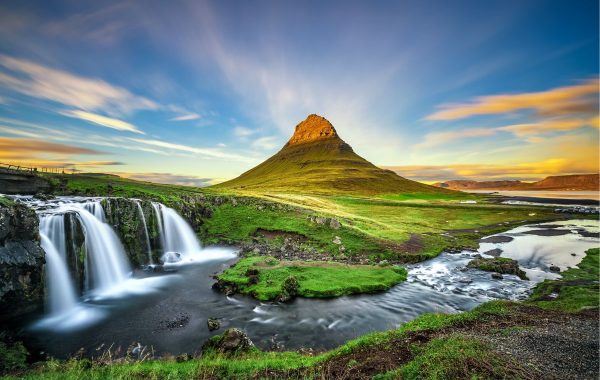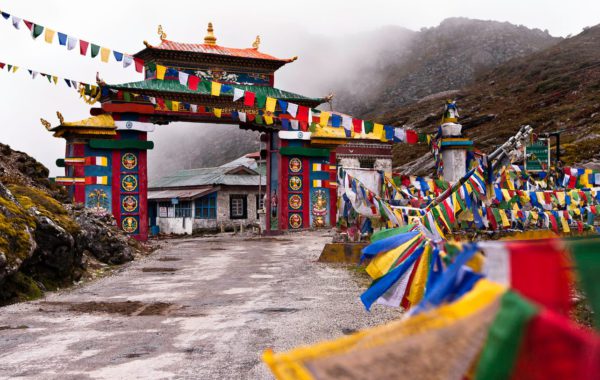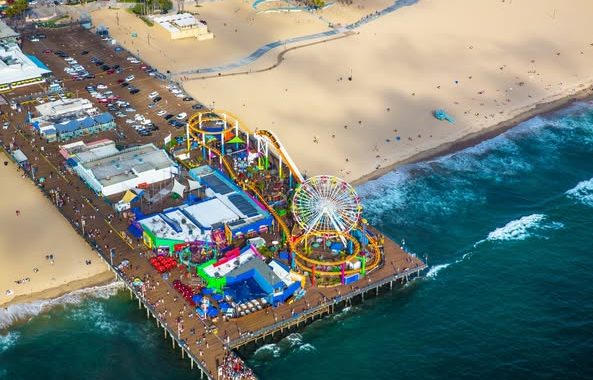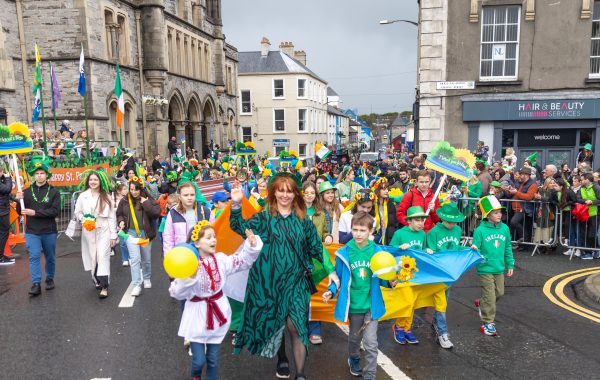Iceland, a country of rugged landscapes and ancient folklore, has captivated travelers with its unique combination of natural beauty and rich cultural heritage. Traditionally, visitors have explored Iceland through the iconic Ring Road, a 1,332-kilometer loop that offers access to the country’s famed geothermal sites, volcanoes, and waterfalls. However, this route is also one of the most popular and can become crowded during peak tourist seasons. Here’s a new option for those seeking a more secluded experience has emerged: the Arctic Coast Way. Launched in 2019, this route spans Iceland’s north and offers a fresh, off-the-beaten-path adventure, winding through coastal villages, dramatic cliffs, and hidden beaches, free from the bustling crowds of the Ring Road.
The Arctic Coast Way stretches for approximately 900 kilometers along Iceland’s northern coast, beginning in the village of Hvammstangi and weaving through seven peninsulas before ending in the remote hamlet of Bakkafjörður. The best time to visit is May to September, when rental cars are available, or even in winter, although snow and unpredictable weather may create detours. Along this path, visitors can encounter Iceland’s untouched beauty, from basalt cliffs and pebble beaches to the occasional curious seal basking along the shore. Signposts marked with an infinity symbol guide travelers along this scenic journey.

One of the route’s first notable stops is Hvammstangi, a small village that feels like a world away from Iceland’s capital, Reykjavik. The town serves as the gateway to the Vatnsnes Peninsula, known for its wildlife, particularly seals. Here, visitors can experience Iceland’s quieter, more secluded beauty before continuing toward Skagaströnd, a village with ties to a legendary 10th-century fortune teller. The Museum of Prophecies in Skagaströnd celebrates this legend, and visitors are invited to immerse themselves in the lore, even getting their fortunes read by a local guide. These northern communities retain an authenticity that stands apart from the bustling southern attractions, offering an intimate view into Icelandic life and lore.

As travelers make their way along the first two peninsulas, Vatnsnes and Skagi, they’ll reach the port town of Sauðárkrókur on the Skagafjörður fjord. Though small, Sauðárkrókur offers a taste of cosmopolitan life in northern Iceland. Here, visitors can sample regional specialties like cured foal and smoked lamb at local eateries or stay at Hótel Tindastóll, Iceland’s oldest hotel. This historic establishment boasts cozy fireside seating and a collection of vintage photographs, adding a touch of old-world charm to the Arctic Coast Way experience
Continuing along the coast, the route leads to the peninsula of Tröllaskagi, where dramatic landscapes unfold around every twist in the road. High cliffs, rolling pastures, and rugged highlands provide travelers with sweeping ocean views, sometimes through a network of narrow mountain tunnels. The fishing port of Siglufjörður, often called Sigló, lies at the tip of this peninsula. Once a bustling hub during the herring fishing era of the early 1900s, Sigló became nearly abandoned by the 1960s due to overfishing. However, the town has since been revitalized, with old fish factories repurposed into breweries and museums. The Herring Era Museum captures the town’s former glory, showcasing artifacts and stories from a time when herring fueled the local economy.

In addition to rich human history, the Arctic Coast Way provides unique opportunities to explore Iceland’s marine ecosystems. Húsavík, a town nestled on Skjálfandi Bay, has earned a reputation as the whale-watching capital of Europe. Here, travelers can board a traditional wooden schooner to explore the bay, keeping an eye out for various whale species, including the blue whale, the world’s largest animal. This area is teeming with other marine life, such as puffins and razorbills, adding to the rich biodiversity visible from the shores. Notably, Húsavík’s whale-watching industry is driven by a commitment to conservation; whales and puffins are not considered food but treasured wildlife, highlighting the town’s respect for these creatures.
Taking a detour inland from the Arctic Coast Way leads to Lake Mývatn, one of the most geologically fascinating areas in Iceland. The 22-square-kilometer lake lies on the Mid-Atlantic Ridge, where the North American and Eurasian tectonic plates meet. This region features bubbling mud pots, steaming fumaroles, and pseudo-craters, creating a surreal landscape that serves as a window into the earth’s powerful subterranean forces. The Mývatn Nature Baths provide a tranquil spot for soaking in mineral-rich waters while taking in views of the surrounding lava fields. Unlike Reykjavik’s Blue Lagoon, this hot spring offers a more peaceful, less crowded setting for relaxation.
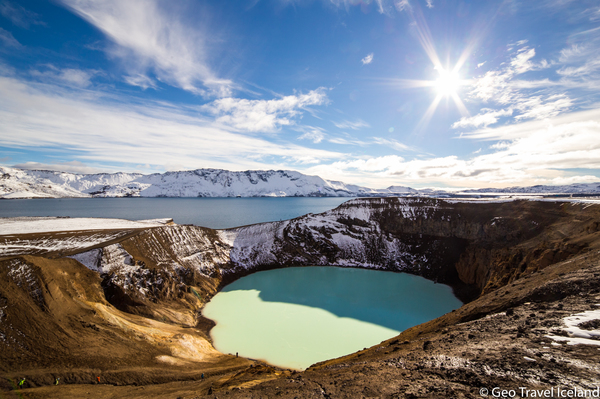
As travelers loop back toward the coastal road, they are greeted by two of northern Iceland’s most awe-inspiring natural wonders: the Dettifoss waterfall and the Ásbyrgi canyon. Dettifoss, known as Europe’s most powerful waterfall, thunders with such force that rainbows often form in its spray. Nearby, Ásbyrgi is a horseshoe-shaped canyon steeped in local mythology. According to Icelandic legend, this canyon was formed by a giant hoofprint from Odin’s eight-legged horse. Ásbyrgi is also considered the domain of the “Huldufólk” or hidden people, a mythical race of taller, ethereal beings resembling humans.
One of the final stretches of the Arctic Coast Way takes travelers to Melrakkaslétta Peninsula, Iceland’s northernmost region. Here, the landscape is starkly beautiful, with frost-covered grasslands and coastal cliffs stretching toward the Arctic Circle. Raufarhöfn, a tiny village on the peninsula, is home to the Arctic Henge, an ambitious monument still under construction. Modeled after England’s Stonehenge, the Arctic Henge is intended to serve as a gathering place for those seeking to celebrate the winter and summer solstices. The monument reflects Iceland’s strong connection to Norse mythology, symbolizing the beginning and end of the cosmos according to ancient poems.
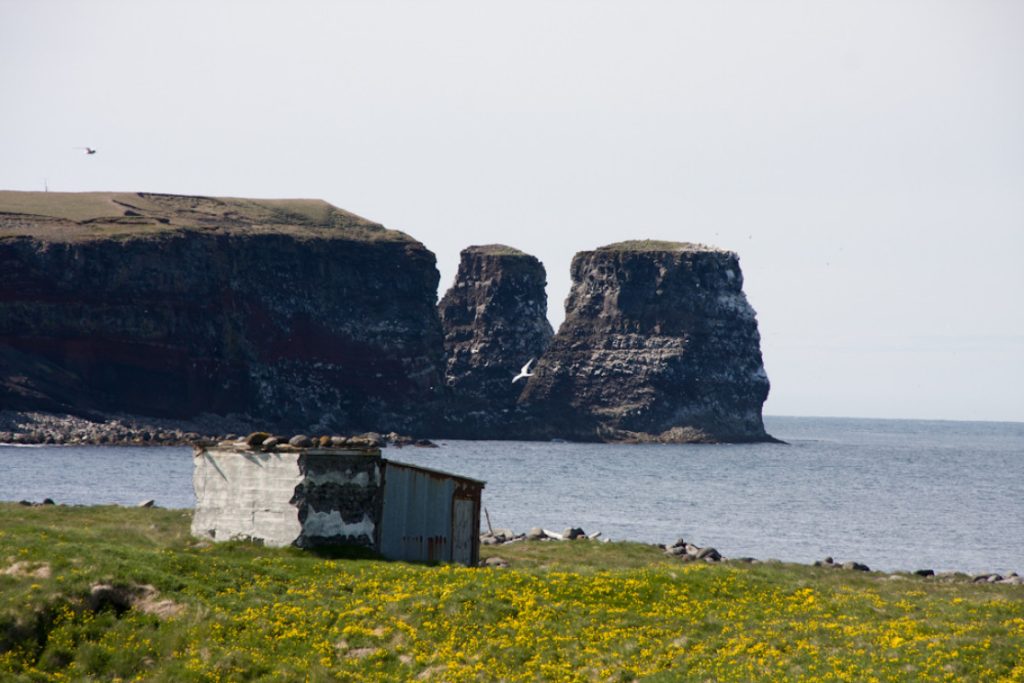
The Arctic Coast Way encapsulates Iceland’s raw, unfiltered beauty, offering a quieter, more intimate exploration of the country’s northern reaches. Unlike the Ring Road, which draws throngs of tourists to its iconic stops, this route invites travelers to delve into local traditions, ancient myths, and the mesmerizing scenery of Iceland’s north. The journey along the Arctic Coast Way serves not only as an escape from the usual tourist trails but as an immersion into the heritage and soul of Iceland’s northern communities. With every stop, from quaint fishing villages to geothermal wonders and myth-laden canyons, the Arctic Coast Way brings to life Iceland’s unique tapestry of nature, history, and folklore. For those willing to take the road less traveled, this journey promises an unforgettable glimpse into Iceland’s timeless allure.
For latest travel news and updates, food and drink journeys, restaurant features, and more, like us on Facebook or follow us on Instagram. Read more on Travel and Food Network
Book Your Travel Packages
10 Day Europe Tour of Germany, Czech Republic, Hungary and Austria
12-Day Europe Tour from London to Amsterdam, Venice, Rome and Paris





